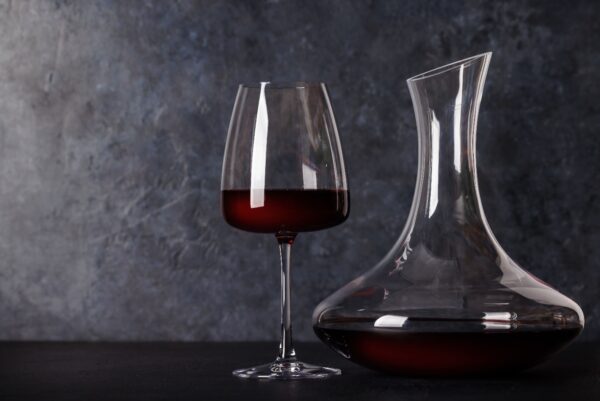Decanting wine is a ritual steeped in tradition and elegance, often associated with fine dining and sommelier expertise. However, with the rise of wine culture, more people are asking whether decanting genuinely enhances the drinking experience or if it’s just a ceremonial flourish. Nathan Duane Oeming dives into the science of decanting, its practical applications, and whether it truly impacts the flavor and aroma of wine.
What Is Decanting?
Decanting is the process of transferring wine from its bottle to another vessel, typically a glass or crystal decanter. While it may seem straightforward, the purpose of decanting serves two main functions:
- Aeration: Allowing wine to interact with oxygen, which can enhance its aroma and flavor.
- Sediment Removal: Separating any solid particles, such as tannins or lees, that may have settled at the bottom of the bottle.
The act of decanting dates back centuries, when wine production methods were less refined, and sediment in bottles was more common. Today, while sediment is less of an issue, decanting remains a widely practiced technique.
The Science Behind Decanting
The idea that wine changes when exposed to oxygen is supported by chemistry. Wine contains volatile compounds that develop and evolve when exposed to air. This process, often referred to as “letting the wine breathe,” can influence the sensory perception of the wine.
Key Chemical Processes
- Oxidation: When wine comes into contact with oxygen, certain compounds break down, softening tannins and releasing aromatic molecules. This process can reduce harshness in young wines and reveal subtler flavors and aromas.
- Evaporation: Volatile compounds that contribute to unpleasant odors, such as sulfites or ethanol, may dissipate during decanting. This can make the wine’s bouquet more appealing.
- Polymerization: For tannic wines, exposure to oxygen encourages tannins to bind together, creating a smoother mouthfeel.
Which Wines Benefit Most from Decanting?
Not all wines require decanting. Understanding the type of wine you’re working with can help you determine whether decanting is necessary or beneficial.
- Young Red Wines: Wines with strong tannins, such as Cabernet Sauvignon, Syrah, or Malbec, often benefit most from decanting. Aeration softens their structure, making them more approachable.
- Aged Red Wines: Older wines, particularly those with a decade or more of aging, may have sediment. Decanting helps separate the wine from the solids, but excessive aeration can diminish delicate flavors and aromas.
- Full-Bodied Whites: While uncommon, some robust white wines, like oaked Chardonnay or Viognier, can benefit from a brief decanting to enhance complexity.
- Budget Wines: Surprisingly, even inexpensive wines can improve with aeration. Decanting allows flavors to open up and diminish off-putting odors, offering a more balanced drinking experience.
How to Decant Properly
Decanting isn’t as daunting as it seems. Here’s a step-by-step guide to maximize its benefits:
- Choose the Right Decanter: Select a decanter that suits the wine type. Wide-bottomed decanters are ideal for young wines needing more oxygen exposure, while narrow-necked decanters are better for older wines.
- Inspect the Wine: If the wine is old, look for sediment. For younger wines, focus on aeration.
- Pour Gently: Tilt the bottle and pour slowly into the decanter to avoid disturbing sediment. If you’re decanting an aged wine, stop pouring as soon as sediment appears at the neck of the bottle.
- Time It Right:
- Young, tannic wines: Allow 1–2 hours of aeration.
- Older, delicate wines: Decant immediately before serving to avoid overexposure.
- Taste and Adjust: Sample the wine after decanting to ensure it has reached the desired flavor profile.
Decanting Myths Debunked
- “All Wines Need Decanting”: Many wines, particularly light reds or delicate whites, do not benefit significantly from decanting and can lose their vibrancy with too much aeration.
- “Pouring Wine Into a Glass Is Enough”: While swirling a glass allows some oxygenation, decanting provides more surface area for the wine to breathe.
- “Using a Decanter Guarantees a Better Taste”: Decanting is not a magic fix. A poorly made wine will not transform into a masterpiece, no matter how long it’s decanted.
Does Decanting Really Make a Difference?
The answer depends on the wine and the drinker’s palate. For young, bold reds, decanting can soften edges and enhance aromatics, offering a more enjoyable experience. For older wines, it removes sediment while preserving the integrity of the flavors. However, casual wine drinkers may not notice a dramatic difference, especially with everyday bottles.
A blind study conducted by wine experts at the University of California, Davis, revealed that trained tasters could distinguish decanted wine from non-decanted wine more consistently than casual drinkers. This suggests that while decanting makes a technical difference, its impact may vary based on personal taste and wine expertise.
Alternative Methods to Aerate Wine
For those without a decanter, there are other ways to aerate wine:
- Swirling: Use a wine glass with a wide bowl and give the wine a vigorous swirl.
- Aerators: These gadgets are designed to simulate the decanting process quickly.
- Double Decanting: Pour the wine into a large container and then back into the bottle.
Decanting wine is more than just a traditional practice; it’s a scientifically backed process that can elevate your wine experience under the right conditions. While not all wines benefit equally, understanding the science and purpose behind decanting allows you to make informed decisions. Whether you’re savoring a high-end vintage or a budget-friendly bottle, decanting offers an opportunity to explore wine’s nuances and enjoy it to the fullest. So, the next time you uncork a bottle, consider giving it a breath of fresh air—it just might make all the difference.
